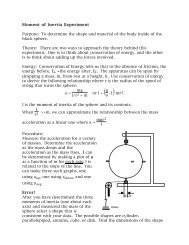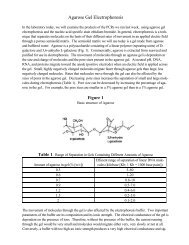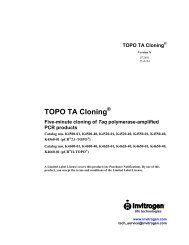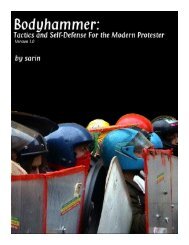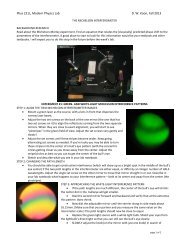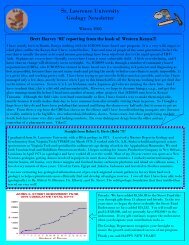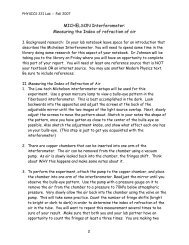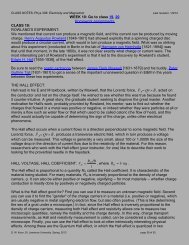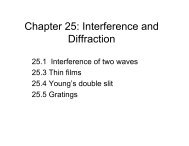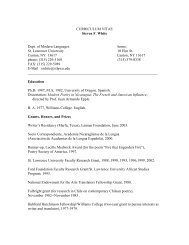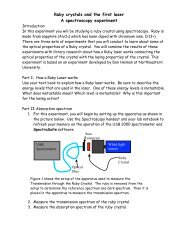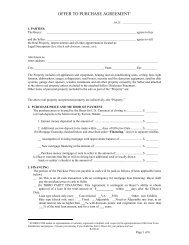HOOKE'S LAW AND A SIMPLE SPRING - St. Lawrence University
HOOKE'S LAW AND A SIMPLE SPRING - St. Lawrence University
HOOKE'S LAW AND A SIMPLE SPRING - St. Lawrence University
You also want an ePaper? Increase the reach of your titles
YUMPU automatically turns print PDFs into web optimized ePapers that Google loves.
For ease in reading, the data are reproduced in Table 1 in order of increasing load.Mass, in kg, is plotted against elongation, in cm, in the graph in Figure 2.For the SHM part of the experiment, a single mass of 4kg was hung from thespring and the time required for the system of mass plus spring to execute an integer Nnumber of oscillations was measured with a digital stopwatch. This was repeated forthree arbitrary values of N, and the data appear in Table 2.Sketches and diagrams need not be works of art but they must clearly indicate the features theyare meant to illustrate. All relevant quantities referred to in the text of your report must beclearly displayed on the diagram.DATA <strong>AND</strong> CALCULATIONSThe Data and Calculations section elaborates on the second part of the Abstract: ‘what wereyour results?’Collect all of your data in one place. Include in the same tables derived values making sure youindicate the source of these derived values. This may require a sample calculation or a formula.Units are also essential.The measured positions of the top (l 0 ) and the bottom (l 1 ) coils of the spring aregiven below in Table 1. From these distances we calculated the length of the spring (L=l 1 -l 0 ), and the extension, ΔL, which is the difference between this extension, ΔL, and theunloaded extension of 38.8cm.In Fig. 2 we calculate the spring constant from measuring 25 to 50 separateoscillations and calculating the period of oscillation, T. From the average value of theperiod, we can use Equation 2 to calculate the spring constant, k.The mass used in calculating k was not merely the load attached to the bottom ofthe spring. The reason for this is that the system that is vibrating includes the springitself. However, the entire spring does not vibrate with the same amplitude as the loadand therefore it is reasonable to assume that the effective load is the mass hung fromthe end of the spring plus some fraction of the mass of the spring. The fraction usedwas 1/3 since similar experiments with other types of springs have led to this empiricalresult. [Sears, Zemansky, and Young] It was assumed that 1/3 of the mass was areasonable approximation to the correct value for this particular spring.Loadl01l L= l − ) ΔL(1l0kg cm cm cm cm m0 31.9 70.7 38.8 --0 32.1 70.9 38.8 38.8 01 32.0 71.1 39.1 39.1 .0032 32.1 74.3 42.2 --2 32.3 74.6 42.3 42.25 .0343 32.1 79.1 47.0 47.0 .0824 32.3 83.6 51.3 51.3 .1254



